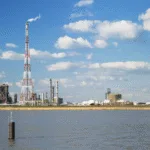Take a journey through Europe’s low-carbon industrial projects
The EU chemical industry is at the heart of Europe’s economy, and leading the transition towards a competitive, resilient, and sustainable future in Europe. Despite current challenges, industry leaders remain committed to the EU Green Deal, continuously investing in innovative technologies to drive this transformation.
About the low-carbon technology map
Cefic’s ‘Low-Carbon Technologies Projects Map’ tracks publicly announced industrial initiatives from across its membership. This interactive map showcases 200+ innovative projects from around 20 countries – from biochemicals and carbon capture to digitalisation and recycling – sharing innovations that are helping drive the transition to a climate neutral and circular future in Europe while supporting quality jobs for European workers.
The European chemical sector employs over 1 million people and is the second-largest chemicals producer in the world. Our industry also acts as the “industry of industries”, supplying essential components to power the green and digital transitions, like wind turbines, batteries, microchips, and advanced medical devices.
The EU chemical industry is at the heart of Europe’s economy, and leading the transition towards a competitive, resilient, and sustainable future in Europe. Despite current challenges, industry leaders remain committed to the EU Green Deal, continuously investing in innovative technologies to drive this transformation.
The investment challenge: a call for action
The scale of this transformation is unprecedented. The Chemical Industry Transition Pathway, released by the European Commission in 2023, emphasises the huge investments needed. Estimates from Processes4Planet Partnership (P4P) under Horizon Europe which indicate that €218-238 billion is needed for early-stage commercial deployment and trillions more to scale up these innovations across Europe.
To accelerate this transformation, a supportive, long-term policy framework in Europe is essential, to drive innovation, attract investments and maintain industrial competitiveness.
Map disclaimers & updates
Our “Low-carbon technologies projects map” is a living document. It is updated twice a year with the support and contribution of Cefic members. This map is based on publicly announced industrial projects. Any questions on a specific project should be directed to the companies involved. The map is not an exhaustive list and does not feature every single initiative and project planned, started and/or executed by the chemical sector. The latest update was implemented in December 2024. The next update is scheduled for Q2 2025. If you would like to contribute and add your projects to the map, please get in touch with Florie Gonsolin (fgo@cefic.be).
Technologies in focus














